After Ingenuity, what next for flying drones on an alien world?
Nasa’s Ingenuity mission to fly in the Martian atmosphere was stunning but what comes next could be sensational, says Steven Cutts. Flying drones on other planets has only just begun

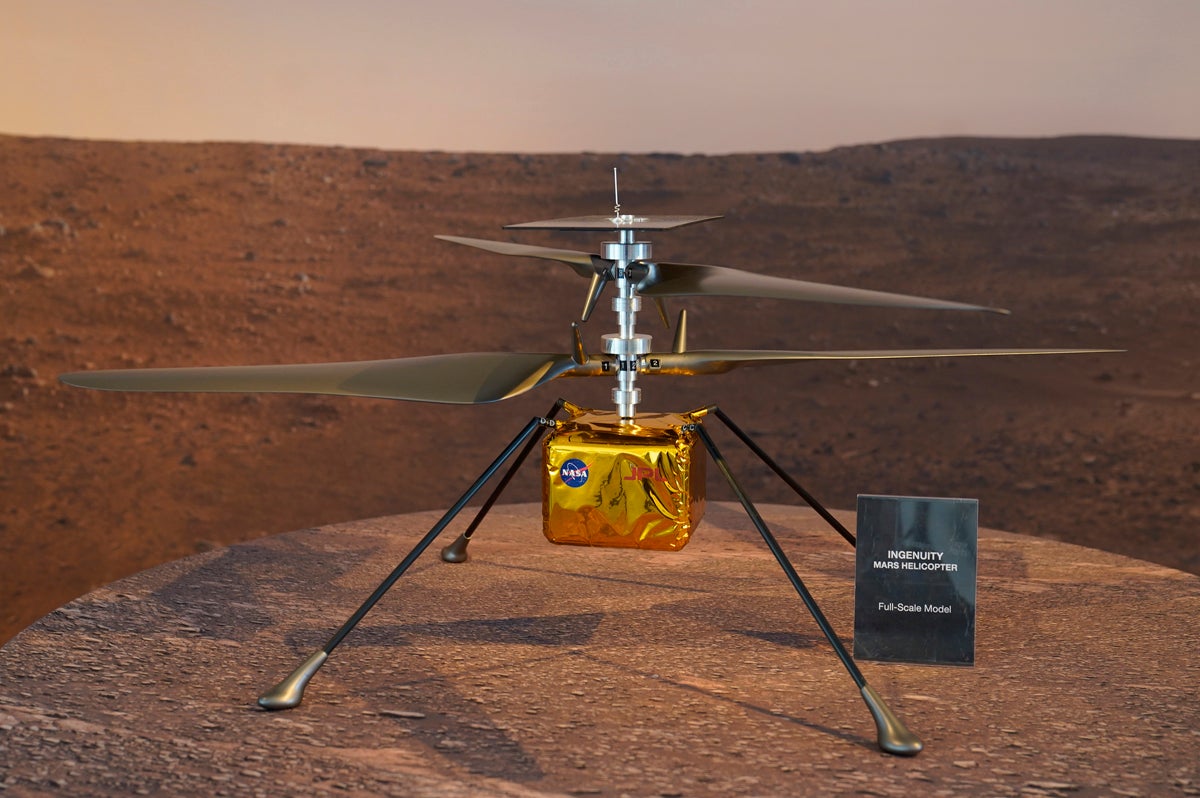
Nasa’s drone Ingenuity has just become the first powered aircraft to get airborne on another planet. It’s a fantastic achievement and the kudos with being the first has always been massive, but in many ways, Ingenuity is merely the latest in a long stream of imaginative designs. Space scientists have long dreamt of flight on an alien world. Even the best of robotic rovers have only covered a few miles of territory. But a flying robot is a different matter. It can traverse very large distances at low altitude and has the option of landing intermittently to analyse the actual surface of the planet and recharge its batteries. Now after several decades of daring prototypes and outlandish concepts a small, two-kilogram helicopter has finally flown in the tenuous atmosphere of Mars.
In 1985, two balloons were deployed by a Soviet lander on Venus. The main landing spacecraft released the balloons at high altitude and they were designed to ascend to about 54km. At this height, the atmospheric density on Venus is similar to that found on Earth. They sent back data for a day or two but didn’t carry cameras. A gondola weighing about seven kilograms was provided by the French Space Agency, who were working alongside the Soviets. In some respects, it was quite obviously simple kit. As with Ingenuity, it was only an add-on to the main mission but it demonstrated the ability of a balloon-like scientific probe to collect and return data from another planet.
In more recent years, America’s Jet Propulsion Laboratory has looked at the possibility of sending an updated device to Venus. Google has done extensive work on balloons that are designed to function in the Earth’s atmosphere. Their job was to provide internet access to remote parts of the world. This project has done a lot of the groundwork for a potential probe to Venus.
One of the good things about a balloon is that it doesn’t require any energy to drive an engine. By its very nature, a robotic space probe is a completely isolated device and even if we fully load it with fuel, it won’t be able to operate for any length of time. Batteries can be recharged by solar panels (as with Ingenuity) but this takes time and it’s almost impossible to absorb enough solar power to stay airborne on a permanent basis. As with Ingenuity, a solar-powered device would have to pause on the surface to recharge its batteries in between short flights.

In order for any kind of balloon or aircraft-like concept to work, there has to be an atmosphere around the planet we want to visit. An airless destination like the moon or Mercury is pretty much out of the question, but there are a surprisingly large number of destinations where atmospheric flight might be possible. Mars has an atmosphere which is about 1 per cent as dense as our own and scientists have repeatedly tried to raise funding for an aircraft or helicopter that would work on this planet. Venus has an atmosphere that is nearly 100 times denser than our own and a surface temperature of over 400C. In contrast, a planet like Jupiter consists of a fabulously dense atmosphere and nothing else and there is a lot of potential for balloon-based research on a gas giant planet like Jupiter.
A balloon probe to another planet would have to travel through outer space like a conventional robotic craft, enter the atmosphere at huge speed and slow down to a more realistic velocity within the atmosphere. At this point, the spacecraft designers have to choose between inflating the balloon during the final descent (as with the French/Soviet probe) or landing on the actual surface and deploying the balloon at a later stage. Assuming the balloon becomes airborne, it can attempt to hold its position at a specific altitude for a protracted period of time. In most cases, it would also be swept around in the wind and cover a large distance. Since the wind speed and direction can change with altitude, a balloon is not an entirely passive device and has at least some control over its direction of travel. Cameras and instruments attached to the balloon are able to photograph the surface at very close range, returning scientific data as they go along. In contrast, a wheeled rover has to cover difficult terrain and is unlikely to travel more than a few miles in the course of its mission.
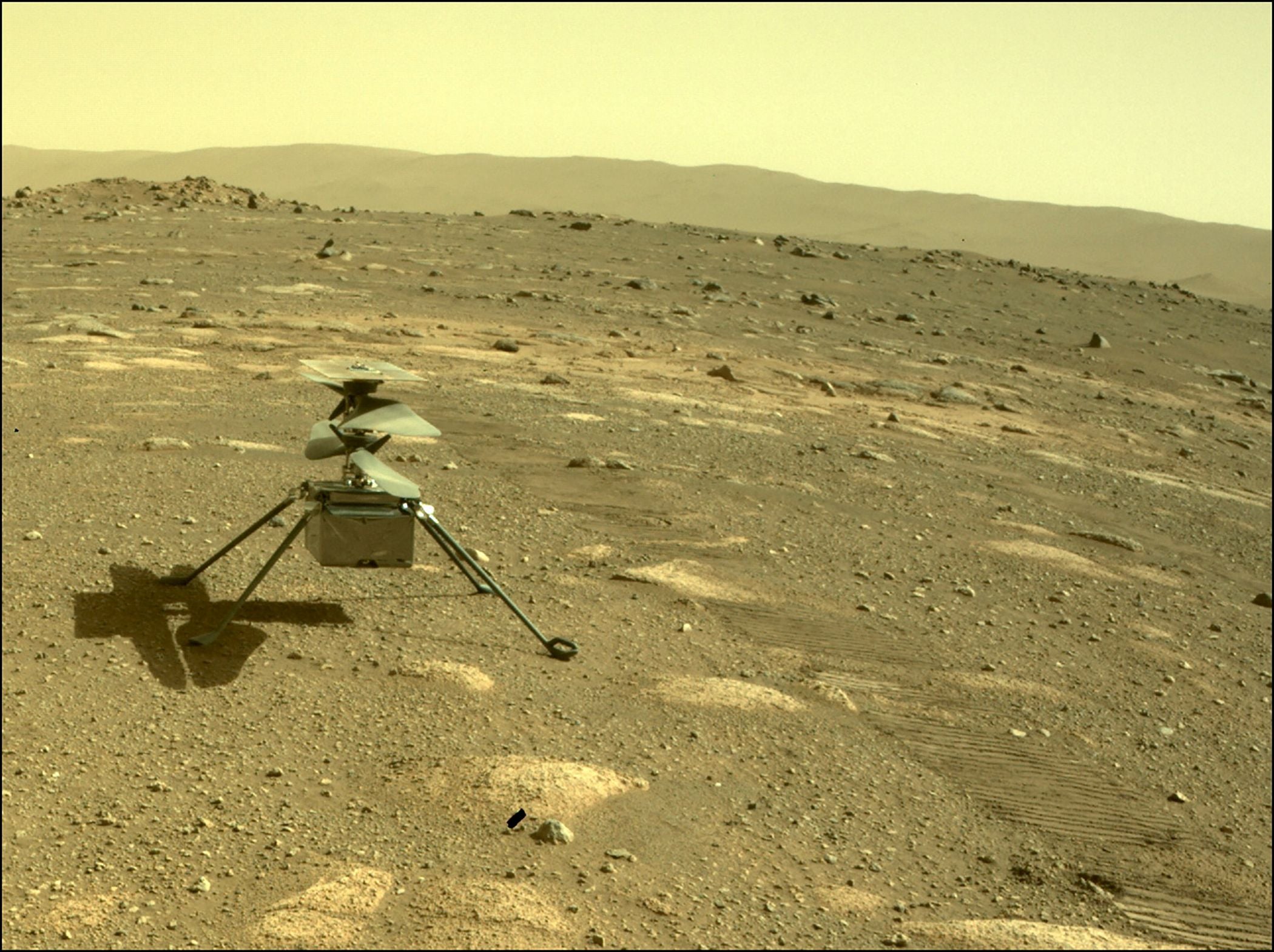
Most scientists imagine a balloon that would carry a gas cylinder on board and release the gas to self-inflate when they arrive at the planet. Another approach would be to use a hot air balloon where heat from the sun will be used to maintain the hot air within the balloon. The advantage is that you don’t have to bring expendable gas with you, or a containment cylinder. Early feasibility studies on a Martian hot air balloon envisage the device landing every night when the intensity of sunlight fades and becomes airborne again shortly after dawn. This sort of approach carries the risk that multiple, uncontrolled landings would eventually damage the device and bring the mission to a rapid end.
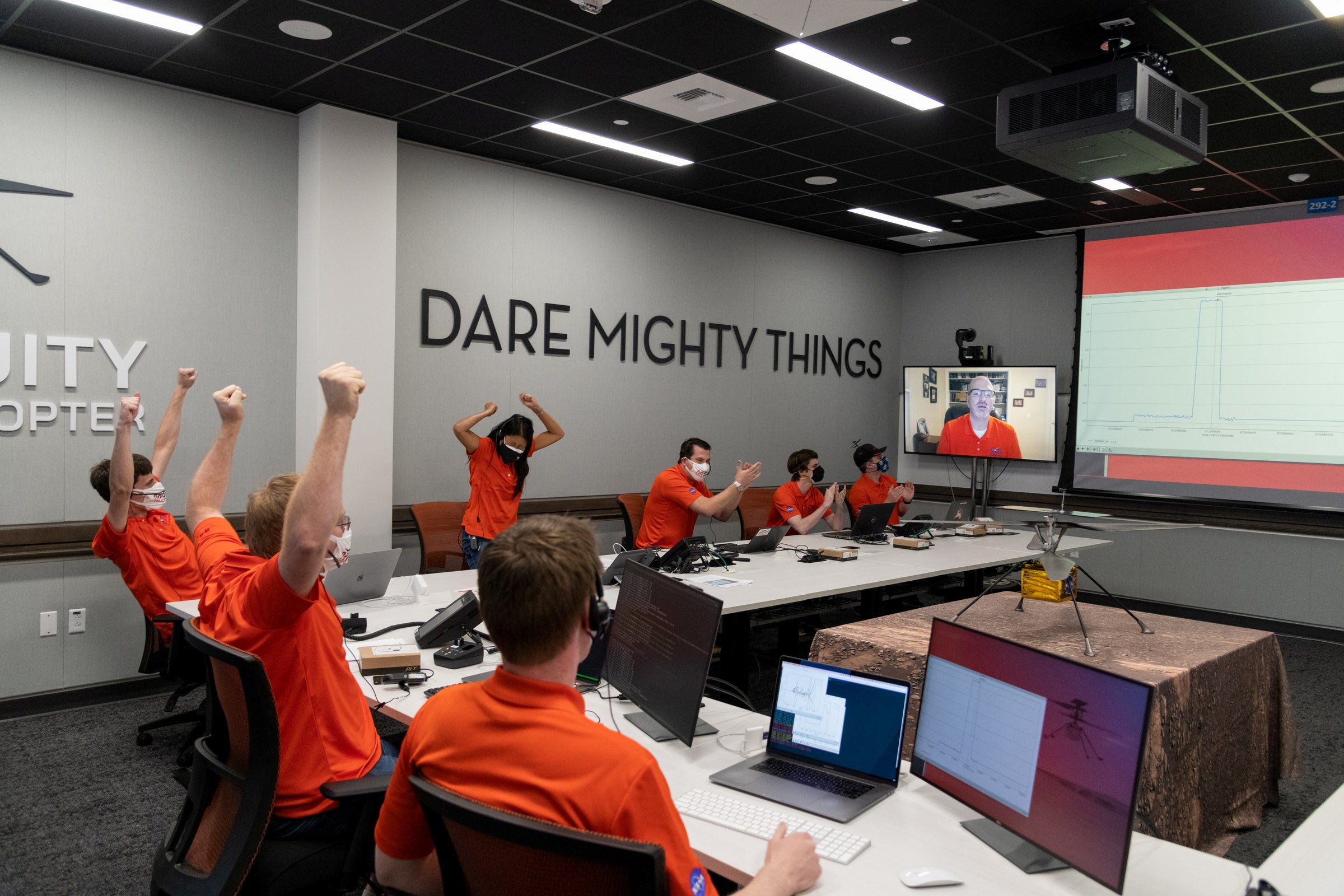
A balloon about 25 metres wide (10,000 cubic metres) would be able to carry 20kg of cargo in the Martian atmosphere. It might not sound like a lot, but with modern electronics and digital cameras this would be enough for a useful prototype.
Apart from balloons, several space agencies have looked at the possibility of powered flight on Mars. On a number of occasions, they actually came close to flying real hardware. These machines would plunge into the alien atmosphere protected by a heat shield and an aeroshell. Once they were travelling at an ordinary speed, they would have to break free from the surrounding capsule and try to deploy their previously folded wings. Diving to pick up more speed, they could then level out and maintain altitude using an electrically powered propeller. Most designs are gossamer-like concepts built from incredibly light materials and all of them were critically dependent on the ability of the equipment onboard to function first time and before they actually impacted on the surface. The potential for disaster would be substantial but if they succeeded, the return from such a mission could be remarkable. Streaming video from an altitude of a few hundred feet would enable the aircraft to fly from one area of interest to another. Part of the reason we haven’t done it yet is that it’s still so very daring. I’ve got a sneaking suspicion that the first few designs might have ended in disaster had they been tried.
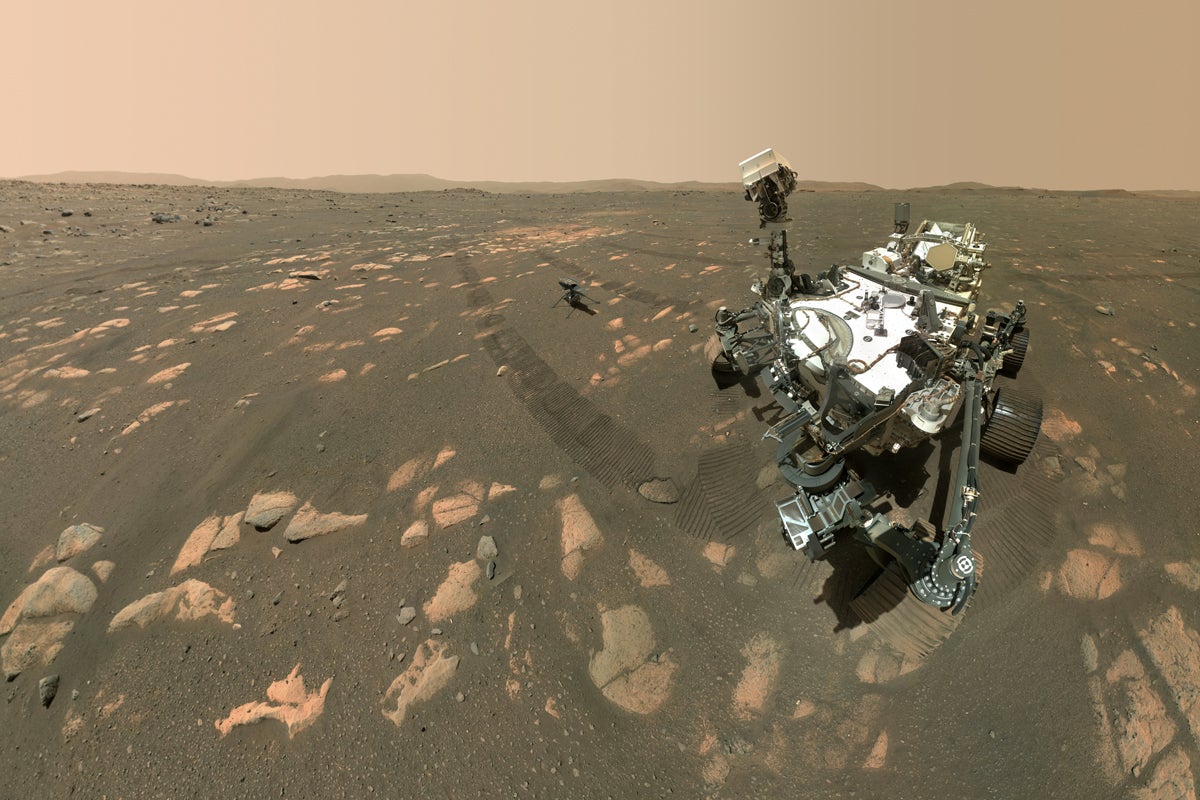
The modern helicopter concept became more attractive and this was recognised by the design team at JPL/Nasa that have just deployed their prototype on Mars and actually flown it as planned on two separate occasions. In some respects, it is remarkable that a powered drone can get airborne in such a thin atmosphere. Winged vehicles are critically dependent on the flow of the atmospheric gas over the surface of the wing while they move. If the gas is very tenuous, the amount of lift generated is less. That being said, powered flight is about overcoming gravity and the gravity on Mars is only about 40 per cent of the gravity on this planet so the challenge isn’t quite so great as it might initially seem.
Part of the reason we haven’t done it yet is that it’s still so very daring. I’ve got a sneaking suspicion that the first few designs might have ended in disaster had they been tried
The aerodynamicists were confident that the Ingenuity helicopter could fly in these conditions but just to make sure, they decided to test it in a special pressure chamber here on Earth. When it comes to a fixed wing aircraft, this is going to be more difficult. However, Nasa has tested prototype Mars aircraft at an altitude of 30km on Earth where the air pressure is actually lower than the pressure on Mars. These studies gave them confidence that the concept was valid. As long ago as the 1970s, Nasa flew a Mars sniffer aircraft what was intended to fly through the atmosphere and send back scientific data. The engine ran on liquid hydrazine fuel that was capable of burning in spite of the fact that there is virtually no oxygen on Mars. Needless to say, the aircraft would crash as soon as the fuel ran out and the actual flight phase of the mission would have been quite short-lived.
At the beginning of the 21st century, the Nasa Langley research centre came up with a promising design with a rather longwinded title: the Aerial Regional-scale Environmental Survey. Ares was one of the most promising concepts to date and was intended to fly at an altitude of about one mile using a small rocket engine. Because of the problems with finite fuel supply, it could only stay airborne for about an hour. Planetary landers have an annoying habit of sulking, breaking contact with mission control or going temporarily out of range. One of the concerns about Ares must have been that if it were to fail during a critically short time period then the failure would be complete.
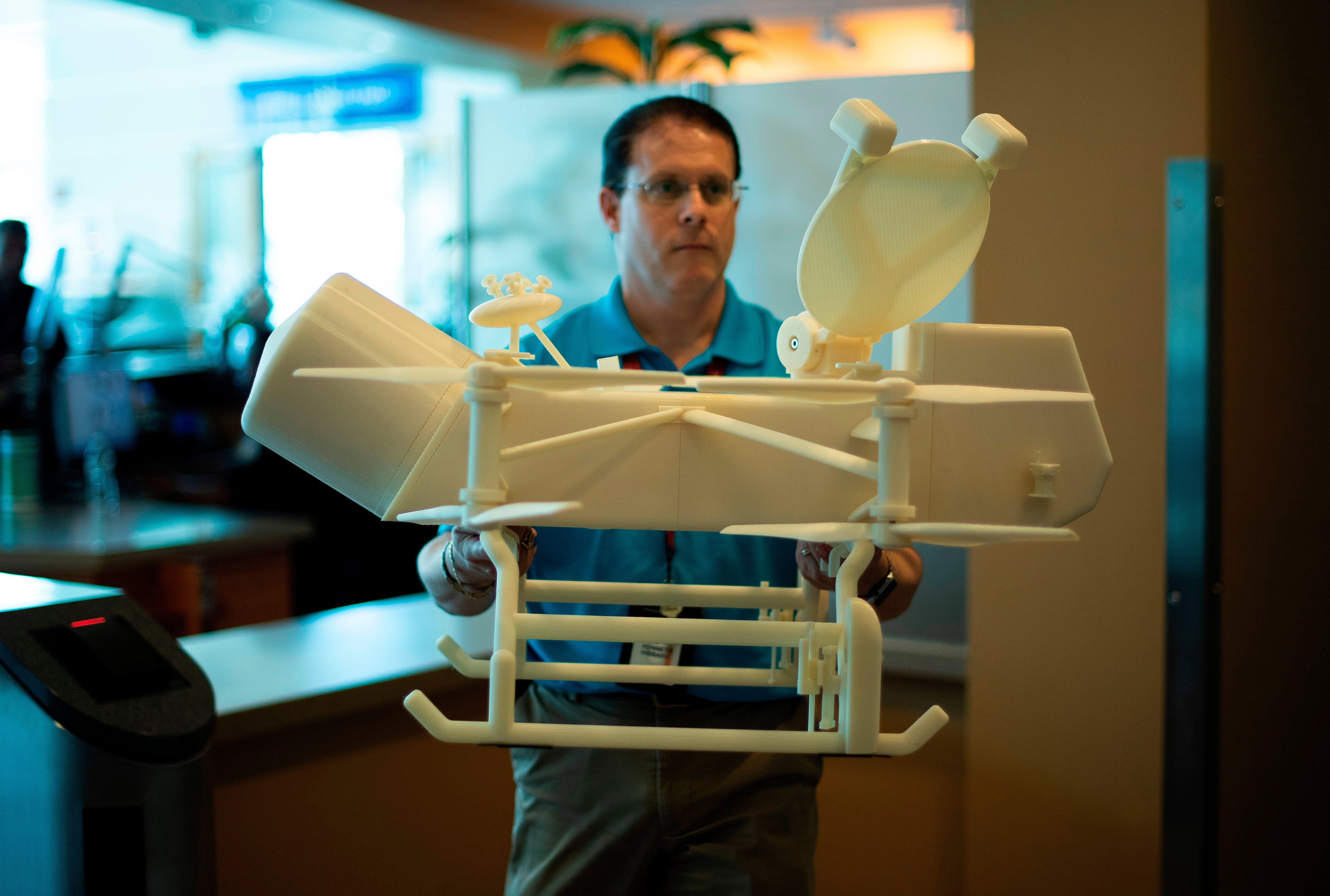
Those of us who have played with toy drone helicopters here on Earth will have learnt that they usually require quite protracted periods of time with recharging for a short burst of action in the air. Ingenuity is solar-powered and the sun shines pretty much every day on Mars, but the sunlight intensity is variable and not as great as on Earth. A solar-powered helicopter has to hesitate between flights, but it’s easier to land and rest than a winged aircraft which would probably just crash on final approach.
Read More:
Nasa is now planning a new helicopter to explore the atmosphere and surface of Titan, which is the largest moon of Saturn. Titan has long been regarded as one of the most promising places in the solar system to support life. The next mission to Titan – called Dragonfly – would launch in 2027 and land in 2036 (planetary missions always have a long lead time). The atmosphere of Titan is mostly methane and ethane and as such it is both dense and exotic so the actual aerodynamic challenge of getting a helicopter to fly on Titan is a lot easier than Mars. Titan is actually larger than the planet Mercury and has a surface that is littered with liquid hydrocarbon lakes and oceans. On the down side, it is hidden by a perpetual cloud cover and it’s pretty much impossible for an orbiting probe to actually photograph the surface. If all goes well (and space exploration doesn’t always go well) the helicopter will make multiple flights through the atmosphere of Titan and explore a large area of the planetary surface. A lot of the data sent back by robotic probes is outside the understanding of the common man but the kind of streaming video we might see from Dragonfly will be pretty sensational.
Join our commenting forum
Join thought-provoking conversations, follow other Independent readers and see their replies
Comments
Bookmark popover
Removed from bookmarks